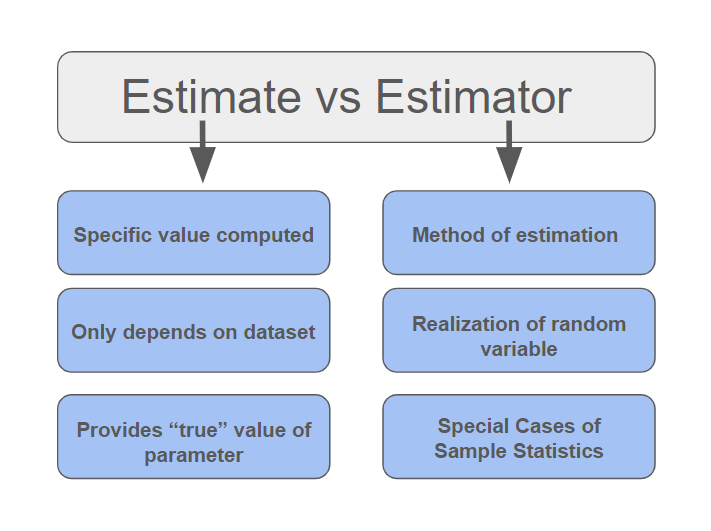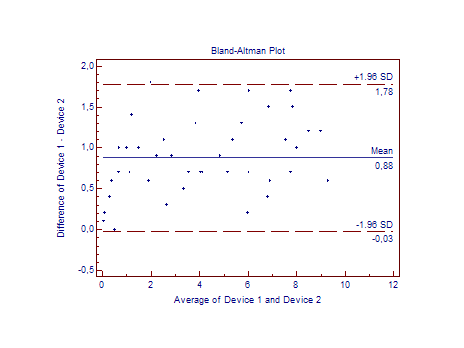|
Lincoln Index
The Lincoln index is a statistical measure used in several fields to estimate the population size of an animal species. Described by Frederick Charles Lincoln in 1930, it is also sometimes known as the Lincoln-Petersen method after C.G. Johannes Petersen who was the first to use the related mark and recapture method.Southwood, T.R.E. & Henderson, P. (2000) ''Ecological Methods'', 3rd edn. Blackwell Science, Oxford. Applications Consider two observers who separately count the different species of plants or animals in a given area. If they each come back having found 100 species but only 5 particular species are found by ''both'' observers, then each observer clearly missed at least 95 species (that is, the 95 that only the other observer found). Thus, we know that both observers miss a lot. On the other hand, if 99 of the 100 species each observer found had been found by both, it is fair to expect that they have found a far higher percentage of the total species that are there t ... [...More Info...] [...Related Items...] OR: [Wikipedia] [Google] [Baidu] |
Estimator
In statistics, an estimator is a rule for calculating an estimate of a given quantity based on Sample (statistics), observed data: thus the rule (the estimator), the quantity of interest (the estimand) and its result (the estimate) are distinguished. For example, the sample mean is a commonly used estimator of the population mean. There are point estimator, point and interval estimators. The point estimators yield single-valued results. This is in contrast to an interval estimator, where the result would be a range of plausible values. "Single value" does not necessarily mean "single number", but includes vector valued or function valued estimators. ''Estimation theory'' is concerned with the properties of estimators; that is, with defining properties that can be used to compare different estimators (different rules for creating estimates) for the same quantity, based on the same data. Such properties can be used to determine the best rules to use under given circumstances. Howeve ... [...More Info...] [...Related Items...] OR: [Wikipedia] [Google] [Baidu] |
Frederick Charles Lincoln
Frederick Charles Lincoln (5 May 1892 – 16 September 1960) was an American ornithologist. Early life and family Lincoln was born on 5 May 1892 in Denver, Colorado. Career As a teenager working at the Colorado Museum of Natural History in 1909, Lincoln learned to prepare specimens from Alexander Wetmore (who was then a student working at the museum) and L. J. Hershey, the museum's Curator of Ornithology. Lincoln's interest in birds continued to develop, and he eventually went on to succeed Hershey as curator in 1913, a post which he held until 1920. He took time out in 1918–1919 to serve as pigeon expert in the U.S. Army Signal Corps. The professional relationship with Wetmore would continue: the two scientists took field trips together in Washington and Hispaniola and co-wrote eight publications. In 1920, Lincoln joined the U.S. Bureau of Biological Survey (at the time, a unit of the United States Department of Agriculture, and now part of the United States Fish and W ... [...More Info...] [...Related Items...] OR: [Wikipedia] [Google] [Baidu] |
Mark And Recapture
Mark and recapture is a method commonly used in ecology to estimate an animal population's size where it is impractical to count every individual. A portion of the population is captured, marked, and released. Later, another portion will be captured and the number of marked individuals within the sample is counted. Since the number of marked individuals within the second sample should be proportional to the number of marked individuals in the whole population, an estimate of the total population size can be obtained by dividing the number of marked individuals by the proportion of marked individuals in the second sample. The method assumes, rightly or wrongly, that the probability of capture is the same for all individuals. Other names for this method, or closely related methods, include capture-recapture, capture-mark-recapture, mark-recapture, sight-resight, mark-release-recapture, multiple systems estimation, band recovery, the Petersen method, and the Lincoln method. Another ... [...More Info...] [...Related Items...] OR: [Wikipedia] [Google] [Baidu] |
Computational Linguistics
Computational linguistics is an interdisciplinary field concerned with the computational modelling of natural language, as well as the study of appropriate computational approaches to linguistic questions. In general, computational linguistics draws upon linguistics, computer science, artificial intelligence, mathematics, logic, philosophy, cognitive science, cognitive psychology, psycholinguistics, anthropology and neuroscience, among others. Computational linguistics is closely related to mathematical linguistics. Origins The field overlapped with artificial intelligence since the efforts in the United States in the 1950s to use computers to automatically translate texts from foreign languages, particularly Russian scientific journals, into English. Since rule-based approaches were able to make arithmetic (systematic) calculations much faster and more accurately than humans, it was expected that lexicon, morphology, syntax and semantics can be learned using explicit rules, a ... [...More Info...] [...Related Items...] OR: [Wikipedia] [Google] [Baidu] |
Zipf's Law
Zipf's law (; ) is an empirical law stating that when a list of measured values is sorted in decreasing order, the value of the -th entry is often approximately inversely proportional to . The best known instance of Zipf's law applies to the frequency table of words in a text or corpus of natural language: \ \mathsf\ \propto\ \frac ~. It is usually found that the most common word occurs approximately twice as often as the next common one, three times as often as the third most common, and so on. For example, in the Brown Corpus of American English text, the word "''the''" is the most frequently occurring word, and by itself accounts for nearly 7% of all word occurrences (69,971 out of slightly over 1 million). True to Zipf's law, the second-place word "''of''" accounts for slightly over 3.5% of words (36,411 occurrences), followed by "''and''" (28,852). It is often used in the following form, called Zipf-Mandelbrot law: \ \mathsf\ \propto\ \frac\ where \ a\ a ... [...More Info...] [...Related Items...] OR: [Wikipedia] [Google] [Baidu] |
Sampling Theory
In this statistics, quality assurance, and survey methodology, sampling is the selection of a subset or a statistical sample (termed sample for short) of individuals from within a statistical population to estimate characteristics of the whole population. The subset is meant to reflect the whole population, and statisticians attempt to collect samples that are representative of the population. Sampling has lower costs and faster data collection compared to recording data from the entire population (in many cases, collecting the whole population is impossible, like getting sizes of all stars in the universe), and thus, it can provide insights in cases where it is infeasible to measure an entire population. Each observation measures one or more properties (such as weight, location, colour or mass) of independent objects or individuals. In survey sampling, weights can be applied to the data to adjust for the sample design, particularly in stratified sampling. Results from probabil ... [...More Info...] [...Related Items...] OR: [Wikipedia] [Google] [Baidu] |
Drake Equation
The Drake equation is a probability theory, probabilistic argument used to estimate the number of active, communicative extraterrestrial life, extraterrestrial civilizations in the Milky Way Galaxy.Physics Today 14 (4), 40–46 (1961). The equation was formulated in 1961 by Frank Drake, not for purposes of quantifying the number of civilizations, but as a way to stimulate scientific dialogue at the first scientific meeting on the search for extraterrestrial intelligence (SETI). The equation summarizes the main concepts which scientists must contemplate when considering the question of other radio-communicative life. It is more properly thought of as an approximation than as a serious attempt to determine a precise number. Criticism related to the Drake equation focuses not on the equation itself, but on the fact that the estimated values for several of its factors are highly conjectural, the combined multiplicative effect being that the uncertainty associated with any derived ... [...More Info...] [...Related Items...] OR: [Wikipedia] [Google] [Baidu] |
German Tank Problem
German(s) may refer to: * Germany, the country of the Germans and German things **Germania (Roman era) * Germans, citizens of Germany, people of German ancestry, or native speakers of the German language ** For citizenship in Germany, see also German nationality law **Germanic peoples (Roman era) * German diaspora * German language * German cuisine, traditional foods of Germany People * German (given name) * German (surname) * Germán, a Spanish name Places * German (parish), Isle of Man * German, Albania, or Gërmej * German, Bulgaria * German, Iran * German, North Macedonia * German, New York, U.S. * Agios Germanos, Greece Other uses * German (mythology), a South Slavic mythological being * Germans (band), a Canadian rock band * "German" (song), a 2019 song by No Money Enterprise * ''The German'', a 2008 short film * "The Germans", an episode of ''Fawlty Towers'' * ''The German'', a nickname for Congolese rebel André Kisase Ngandu See also * Germanic (di ... [...More Info...] [...Related Items...] OR: [Wikipedia] [Google] [Baidu] |
Inter-rater Reliability
In statistics, inter-rater reliability (also called by various similar names, such as inter-rater agreement, inter-rater concordance, inter-observer reliability, inter-coder reliability, and so on) is the degree of agreement among independent observers who rate, code, or assess the same phenomenon. Assessment tools that rely on ratings must exhibit good inter-rater reliability, otherwise they are not test validity, valid tests. There are a number of statistics that can be used to determine inter-rater reliability. Different statistics are appropriate for different types of measurement. Some options are joint-probability of agreement, such as Cohen's kappa, Scott's pi and Fleiss' kappa; or inter-rater correlation, concordance correlation coefficient, intra-class correlation, and Krippendorff's alpha. Concept There are several operational definitions of "inter-rater reliability," reflecting different viewpoints about what is a reliable agreement between raters. There are three oper ... [...More Info...] [...Related Items...] OR: [Wikipedia] [Google] [Baidu] |
Ecological Techniques
Ecology () is the natural science of the relationships among living organisms and their environment. Ecology considers organisms at the individual, population, community, ecosystem, and biosphere levels. Ecology overlaps with the closely related sciences of biogeography, evolutionary biology, genetics, ethology, and natural history. Ecology is a branch of biology, and is the study of abundance, biomass, and distribution of organisms in the context of the environment. It encompasses life processes, interactions, and adaptations; movement of materials and energy through living communities; successional development of ecosystems; cooperation, competition, and predation within and between species; and patterns of biodiversity and its effect on ecosystem processes. Ecology has practical applications in fields such as conservation biology, wetland management, natural resource management, and human ecology. The word ''ecology'' () was coined in 1866 by the German scientist Ern ... [...More Info...] [...Related Items...] OR: [Wikipedia] [Google] [Baidu] |
Estimation Methods
Estimation (or estimating) is the process of finding an estimate or approximation, which is a value that is usable for some purpose even if input data may be incomplete, uncertain, or unstable. The value is nonetheless usable because it is derived from the best information available.C. Lon Enloe, Elizabeth Garnett, Jonathan Miles, ''Physical Science: What the Technology Professional Needs to Know'' (2000), p. 47. Typically, estimation involves "using the value of a statistic derived from a sample to estimate the value of a corresponding population parameter".Raymond A. Kent, "Estimation", ''Data Construction and Data Analysis for Survey Research'' (2001), p. 157. The sample provides information that can be projected, through various formal or informal processes, to determine a range most likely to describe the missing information. An estimate that turns out to be incorrect will be an overestimate if the estimate exceeds the actual result and an underestimate if the estimate fa ... [...More Info...] [...Related Items...] OR: [Wikipedia] [Google] [Baidu] |






